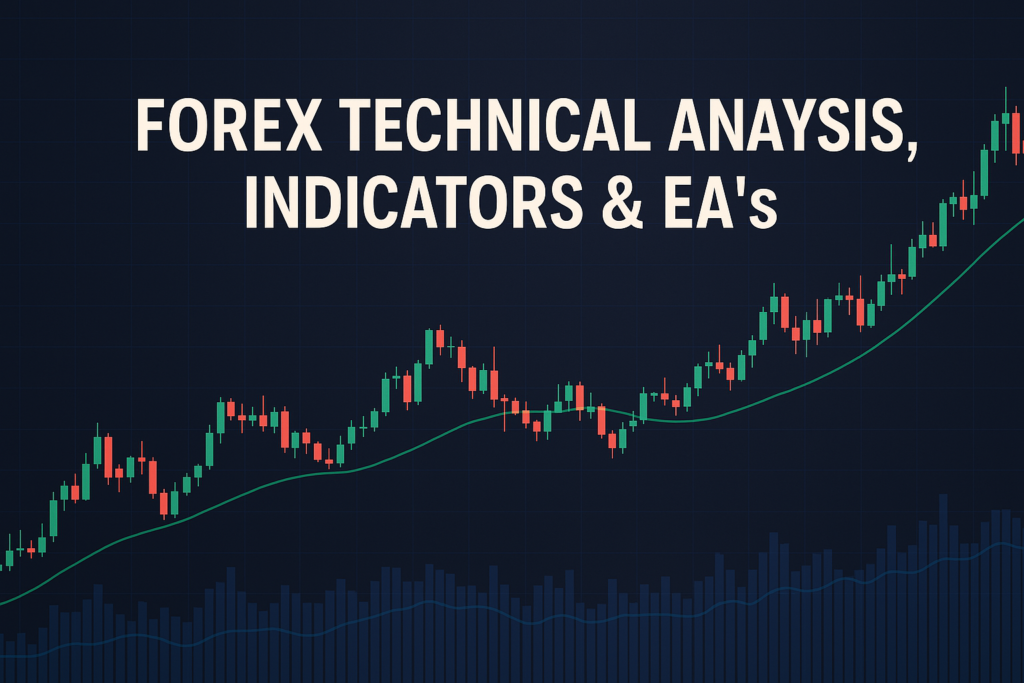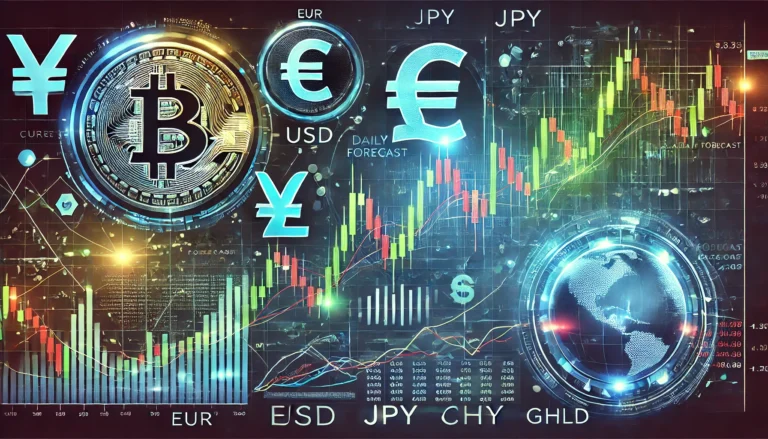
The 200 and 50 day moving average is vital for Forex traders, helping to identify trends and improve trading strategies.
The 200 and 50 day moving average is an essential tool in Forex trading. It helps traders understand price trends over time. The 200-day moving average shows long-term trends, while the 50-day moving average focuses on shorter-term trends. Together, they provide valuable insights into market behavior.
However, both beginners and experienced traders often struggle with these concepts. Some find it challenging to interpret the moving averages accurately, while others may not know how to apply them effectively in their strategies. Understanding and using the 200 and 50 day moving averages correctly can lead to better trading decisions and potentially higher profits.
This article will explore the significance of the 200 and 50 day moving average in Forex trading. We will dive into what they are, how they work, their history, advantages and disadvantages, application methods, strategies, and address frequently asked questions.
In the world of finance, foreign exchange online trading has grown immensely popular. It allows traders to exchange currencies and capitalize on price fluctuations. Understanding moving averages is crucial for making informed trading decisions.
What is a 200 and 50 Day Moving Average?
The 200 and 50 day moving average are tools that show the average price of a currency over 200 or 50 days. They help traders see if a currency is trending up or down. Imagine walking along a path; if you look only at your feet, you might trip. But if you look ahead, you can see where you’re going. That’s what moving averages do—they help you see the direction of the market.
Types of 200 and 50 Day Moving Average
There are different types of moving averages, including:
- Simple Moving Average (SMA): This is the basic form. It adds up the prices over a period and divides by the number of days.
- Exponential Moving Average (EMA): This gives more weight to recent prices, making it more responsive to price changes.
- Weighted Moving Average (WMA): This also gives more importance to recent prices, but in a different way than EMA.
How 200 and 50 Day Moving Average Smooth Out Price Action
Moving averages smooth out price fluctuations. Think of it as a calm lake. If the water is choppy, you can’t see the bottom. But when the water is smooth, you can see clearly. A moving average helps to reduce the noise in price data, allowing traders to focus on the broader trend.
Common Periods Used and Why
Traders commonly use 50-day and 200-day moving averages. The 50-day average gives a sense of the short-term trend, while the 200-day average offers insight into the long-term trend. Using both together helps traders make informed decisions.
The History of 200 and 50 Day Moving Average: How It Became Popular
Origin of 200 and 50 Day Moving Average
The concept of moving averages dates back to the early 1900s. Traders used these calculations to identify trends in stock prices. The 200 and 50 day moving averages emerged as popular tools due to their effectiveness in analyzing market movements.
When Did Traders Start Using It Widely?
By the late 20th century, traders began adopting the 200 and 50 day moving averages more widely. As technology advanced, these tools became easier to access and use on trading platforms, leading to their popularity in Forex trading.
Real-Life Stories
Many professional traders have credited the 200 and 50 day moving averages for their success. For example, a trader might have entered a trade based on a crossover of these moving averages, leading to significant profits. Stories like these show the potential of these tools in trading.
Advantages and Disadvantages of 200 and 50 Day Moving Average
Advantages:
- Helps Identify Trends Easily: Moving averages clearly show whether a currency is trending up or down.
- Useful for Dynamic Support and Resistance: They can act as support or resistance levels, helping traders find entry and exit points.
- Works Well for Crossover Strategies: When the 50-day crosses above the 200-day, it can signal a buying opportunity.
Disadvantages:
- lags Behind Price Movements: Moving averages are based on past prices, which means they may not react quickly to sudden changes.
- Can Give False Signals in Sideways Markets: In a flat market, moving averages may give misleading signals, leading to losses.
How to Apply 200 and 50 Day Moving Average on MT4 & MT5
Step-by-Step Guide to Adding 200 and 50 Day Moving Average on Charts
To add moving averages on MT4 or MT5, open your trading platform, select “Insert,” choose “Indicators,” then “Trend,” and finally select “Moving Average.” Adjust the settings to 50 or 200 days as needed.
Customizing 200 and 50 Day Moving Average Settings
You can customize the color and type of moving average. Choose colors that are easy to see against the chart background. You can select from SMA, EMA, or WMA based on your preference.
Saving Templates for Easy Application
Once you set the moving averages the way you like, save your template. This way, you can apply the same settings to future charts without repeating the process.
5 to 7 Trading Strategies Using Only 200 and 50 Day Moving Average
All Time Frame Strategy (M5 to D1)
This strategy works across multiple time frames. Traders watch for crossovers between the 200 and 50 day moving averages to decide when to buy or sell. For example, if the 50-day crosses above the 200-day, it may indicate a buying opportunity.
Trending Strategies
In a strong trend, traders can use the moving averages to determine the direction of trades. If prices remain above the 200-day moving average, it is a signal to look for buying opportunities.
Countertrade Strategies
In a counter-trend strategy, traders look for potential reversals when the price touches the moving averages. If the price bounces off the 50-day moving average, it may present a selling opportunity.
Swing Trades Strategies
Swing traders can use the moving averages to identify entry and exit points. For instance, they may enter a trade when the price crosses above the 50-day moving average and exit when it touches the 200-day moving average.
5 to 7 Trading Strategies Combining 200 and 50 Day Moving Average with Other Indicators
All Time Frame Strategy (M5 to D1)
This strategy combines moving averages with RSI (Relative Strength Index). For example, if the 50-day crosses above the 200-day, and the RSI is below 30, it can indicate a strong buying opportunity.
Trending Strategies
Using moving averages with MACD (Moving Average Convergence Divergence) can enhance trend analysis. If both indicators suggest a bullish trend, it may confirm a buying signal.
Countertrade Strategies
Traders can combine moving averages with Bollinger Bands. If the price reaches the upper band while below the 200-day moving average, it may indicate a selling opportunity.
Swing Trades Strategies
For swing trades, combining moving averages with Fibonacci retracement levels can be effective. Traders can look for price retracements to the 50-day moving average as entry points.
Understanding the concept of calculating angular momentum is also important for Forex traders. It helps assess the strength of price movements, enhancing trading strategies.
Top 10 FAQs About 200 and 50 Day Moving Average
1. What is the difference between the 200 and 50 day moving average?
The 200-day moving average shows long-term trends, while the 50-day moving average focuses on short-term trends.
2. How do I use the 200 and 50 day moving average in trading?
Traders often use crossovers between the two moving averages to signal buying or selling opportunities.
3. Can I use moving averages in sideways markets?
While moving averages can be used, they may provide false signals in sideways markets.
4. What are the best settings for moving averages?
The 50 and 200 day settings are popular among traders, but you can adjust them based on your strategy.
5. How do I interpret a crossover?
A crossover occurs when the 50-day moving average crosses above or below the 200-day moving average. This can signal a change in trend.
6. Should I rely solely on moving averages?
It’s best to use moving averages in conjunction with other indicators for a more comprehensive trading strategy.
7. How often should I check moving averages?
Traders typically check moving averages daily or weekly, depending on their trading style and time frame.
8. Can moving averages help me in risk management?
Yes, moving averages can help identify support and resistance levels, aiding in risk management.
9. Are moving averages suitable for all currency pairs?
Yes, moving averages can be applied to any currency pair, but their effectiveness may vary based on market conditions.
10. How can I practice using moving averages?
Start by using a demo account to practice applying moving averages in your trading strategies without risking real money.
In conclusion, the 200 and 50 day moving average are powerful tools in Forex trading. They help traders identify trends, support, and potential entry and exit points. By understanding their advantages and disadvantages, you can apply them effectively in your trading strategies. Remember to test your strategies with a demo account before risking real money. Happy trading!
Need more clarity on this concept? This article explains it in simple terms Investing.com, CNBC
Expand Your Knowledge
- 📌 Forex Trading Learning Road Map
- 📌 Forex Trading Course with no Fees
- 📌 Forex Trading Issues, Problems, and Solutions
- 📌 Forex Daily Forecast & Live Updates
- 📌 Forex Fundamental & News Analysis: Tomorrow’s Market Movers & Trade Opportunities
- 📌 Forex Education Hub: Learn & Profit
- 📌 Forex Technical Analysis, Indicators & EA’s
Start Trading Today
Ready to take your forex trading to the next level? Open an account with Exness, one of the most trusted platforms in the industry. 👉 Sign Up Now and trade with confidence!
My recommended broker stands out with ultra-low spreads for beginners, instant withdrawals, and zero spread accounts for pro traders.
Trusted since 2008, lightning-fast execution, no hidden fees, and a secure, transparent trading environment—giving you the edge you need to succeed. 🚀
YouTube Video Library: Related Videos
Note: The video above is embedded from YouTube and is the property of its original creator. We do not own or take responsibility for the content or opinions expressed in the video.



